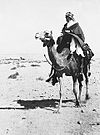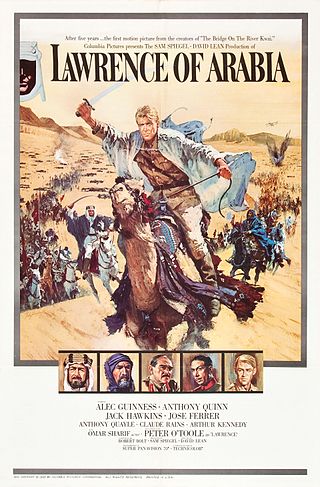
Lawrence of Arabia is a 1962 epic biographical adventure drama film based on the life of T. E. Lawrence and his 1926 book Seven Pillars of Wisdom. It was directed by David Lean and produced by Sam Spiegel through his British company Horizon Pictures and distributed by Columbia Pictures. The film stars Peter O'Toole as Lawrence with Alec Guinness playing Prince Faisal. The film also stars Jack Hawkins, Anthony Quinn, Omar Sharif, Anthony Quayle, Claude Rains and Arthur Kennedy. The screenplay was written by Robert Bolt and Michael Wilson.
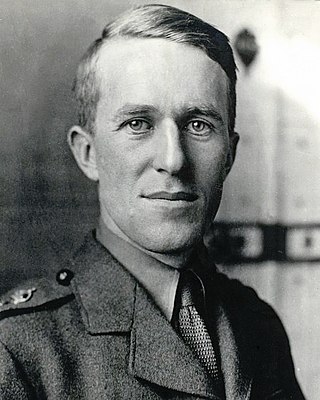
Thomas Edward Lawrence was a British archaeologist, army officer, diplomat, and writer who became renowned for his role in the Arab Revolt (1916–1918) and the Sinai and Palestine Campaign (1915–1918) against the Ottoman Empire during the First World War. The breadth and variety of his activities and associations, and his ability to describe them vividly in writing, earned him international fame as Lawrence of Arabia, a title used for the 1962 film based on his wartime activities.

The Hejaz railway was a narrow-gauge railway that ran from Damascus to Medina, through the Hejaz region of modern day Saudi Arabia, with a branch line to Haifa on the Mediterranean Sea.

Aqaba is the only coastal city in Jordan and the largest and most populous city on the Gulf of Aqaba. Situated in southernmost Jordan, Aqaba is the administrative center of the Aqaba Governorate. The city had a population of 148,398 in 2015 and a land area of 375 square kilometres (144.8 sq mi). Today, Aqaba plays a major role in the development of the Jordanian economy, through the vibrant trade and tourism sectors. The Port of Aqaba also serves other countries in the region.

The Arab Revolt or the Great Arab Revolt was an armed uprising by the Arabs against the Ottoman Empire amidst the Middle Eastern theatre of World War I.

The Battle of Megiddo was fought between 19 and 25 September 1918, on the Plain of Sharon, in front of Tulkarm, Tabsor and Arara in the Judean Hills as well as on the Esdralon Plain at Nazareth, Afulah, Beisan, Jenin and Samakh. Its name, which has been described as "perhaps misleading" since very limited fighting took place near Tel Megiddo, was chosen by British commander Edmund Allenby for its biblical and symbolic resonance.
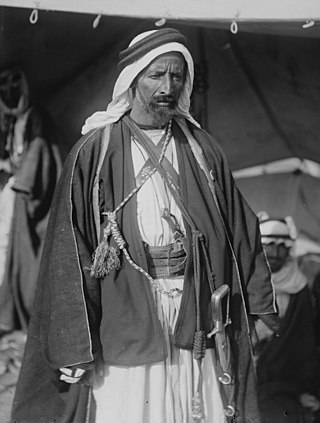
Auda Abu Tayeh or Awda Abu Tayih, nicknamed the Commander of the People or the Desert Falcon, was the Sheikh of a section of the Howeitat or Huwaytat tribe of Bedouin Arabs at the time of the Great Arab Revolt during the First World War. The Howeitat lived in what is now Saudi Arabia/Jordan.
The Nafud desert or simply The Nafud is a desert in the northern part of the Arabian Peninsula at 28.30°N 41.00°E, occupying a great oval depression. It is 290 kilometres (180 mi) long and 225 kilometres (140 mi) wide, with an area of 103,600 square kilometres (40,000 sq mi).

Ross is a 1960 play by British playwright Terence Rattigan.
Jackson Bentley is a fictional American journalist appearing in the film Lawrence of Arabia (1962); he is portrayed by Arthur Kennedy. He is based on the famed American journalist Lowell Thomas.

The Howeitat or Huwaitat are a large Judhami tribe that inhabits areas of present-day southern Jordan, the Sinai Peninsula and Sharqia governate in Egypt, the Negev, and northwestern Saudi Arabia. The Howeitat have several branches, notably the Ibn Jazi, the Abu Tayi, the Anjaddat, and the Sulaymanniyin, in addition to a number of associated tribes.
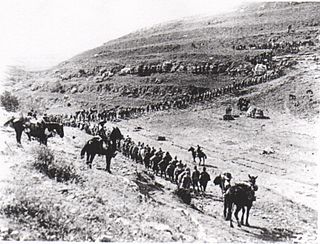
The First Transjordan attack on Amman and to their enemy as the First Battle of the Jordan took place between 21 March and 2 April 1918, as a consequence of the successful Battle of Tell 'Asur which occurred after the Capture of Jericho in February and the Occupation of the Jordan Valley began, during the Sinai and Palestine Campaign of World War I. During the First Transjordan attack large incursions into Ottoman territory occurred. Firstly the Passage of the Jordan River, was successfully captured between 21 and 23 March, followed by the first occupation of Es Salt in the hills of Moab between 24 and 25 March. The First Battle of Amman took place between 27 and 31 March when the Anzac Mounted Division and the Imperial Camel Corps Brigade were reinforced by two battalions of 181st Brigade followed by a second two battalions from the 180th Brigade and artillery. The Fourth Army headquarters located in Amman was strongly garrisoned and during the battle received reinforcements on the Hejaz railway, the strength of which eventually forced the attacking force to retire back to the Jordan Valley between 31 March and 2 April. The Jordan Valley would continue to be occupied by the Egyptian Expeditionary Force (EEF) through the summer until the middle of September 1918 when the Battle of Megiddo began.

The Aqaba Castle or Aqaba Fort, also known as the Mamluk Castle of Aqaba, Jordan, is a Mamluk and Ottoman fortified caravanserai on the pilgrimage route to Mecca and Medina which, in its current form, dates back mainly to the 16th century. In the century preceding the First World War, it was used to a larger degree as a military stronghold.

This is the order of battle for the Battle of Megiddo (1918), the concluding engagement of the Sinai and Palestine Campaign of the First World War. The Entente's Egyptian Expeditionary Force, commanded by General Edmund Allenby and composed mainly of British, Indian, Australian and New Zealand troops, with a small French and Armenian contingent, cooperated with the Arab Northern Army, which was part of the Arab Revolt and was under the overall command of the Emir Feisal, in an all-out offensive against the Yıldırım Army Group, part of the army of the Ottoman Empire.

The Capture of Damascus occurred on 1 October 1918 after the capture of Haifa and the victory at the Battle of Samakh which opened the way for the pursuit north from the Sea of Galilee and the Third Transjordan attack which opened the way to Deraa and the inland pursuit, after the decisive Egyptian Expeditionary Force (EEF) victory at the Battle of Megiddo during the Sinai and Palestine Campaign of World War I. Damascus was captured when Desert Mounted Corps and Prince Feisal's Sherifial Hejaz Army encircled the city, after a cavalry pursuit northwards along the two main roads to Damascus. During the pursuit to Damascus, many rearguards established by remnants of the Ottoman Fourth, Seventh and Eighth Armies were attacked and captured by Prince Feisal's Sherifial Army, Desert Mounted Corps' Australian Mounted Division the 4th and the 5th Cavalry Divisions. The important tactical success of capturing Damascus resulted in political manoeuvring by representatives from France, Britain and Prince Feisal's force.

The Charge at Irbid occurred on 26 September 1918 as a consequence of the victory at the Battle of Megiddo during the subsequent inland pursuit by Desert Mounted Corps to capture Damascus in the Sinai and Palestine Campaign of World War I. The charge occurred when the 2nd Lancers of the 10th Cavalry Brigade, 4th Cavalry Division, attacked the Ottoman Army garrison defending the town of Irbid.
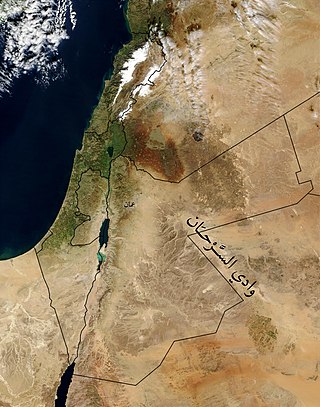
Wadi Sirhan is a wide depression in the northwestern Arabian Peninsula. It runs from the Aljouf Oasis in Saudi Arabia southeastward into Jordan. It historically served as a major trade and transportation route between Syria and Arabia. From antiquity until the early 20th century, control of Wadi Sirhan was often contested by various Arab tribes. The valley is named after the Sirhan tribe which migrated there in the mid-17th century.

The Occupation of Ma'an was the post-World War I occupation of the Sanjak of Ma'an, which straddled the regions of Syria and Arabia, by members of the Hashemite family, who came to power in various regions of the Near East and Arabia; they were King Hussein in the Kingdom of Hejaz, Emir Faisal representing the Arab government in Damascus and Abdullah, who was to become Emir of Transjordan. The region includes the governorates of Ma'an and Aqaba, today in Jordan, as well as the area which was to become a large part of the Israeli Southern District, including the city of Eilat.
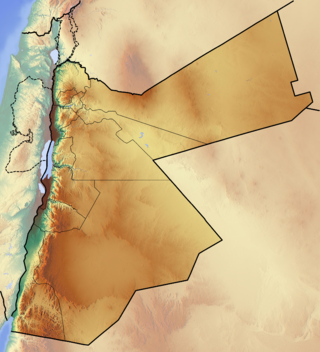
The Jordan–Saudi Arabia border is 731 km (454 mi) in length and runs from the Gulf of Aqaba in the south-west to the tripoint with Iraq in the north-east.
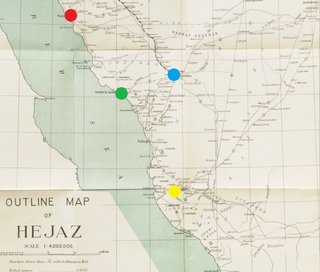
The capture of Wejh took place on 23–24 January 1917 when British-led Arab forces landed by sea and, with the support of naval bombardments, defeated the Ottoman garrison. The attack was intended to threaten the flanks of an Ottoman advance from their garrison in Medina to Mecca, which had been captured by Arab forces in 1916. The sea-based force was to have attacked in co-operation with a larger force under Arab leader Faisal but these men were held up after capturing a quantity of supplies and gold en-route to Wejh. The sea-based force under Royal Navy leadership captured Wejh with naval artillery support, defeating the 1,300-strong Ottoman garrison. The capture of the town safeguarded Mecca, as the Ottoman troops were withdrawn to static defence duties in and around Medina.























